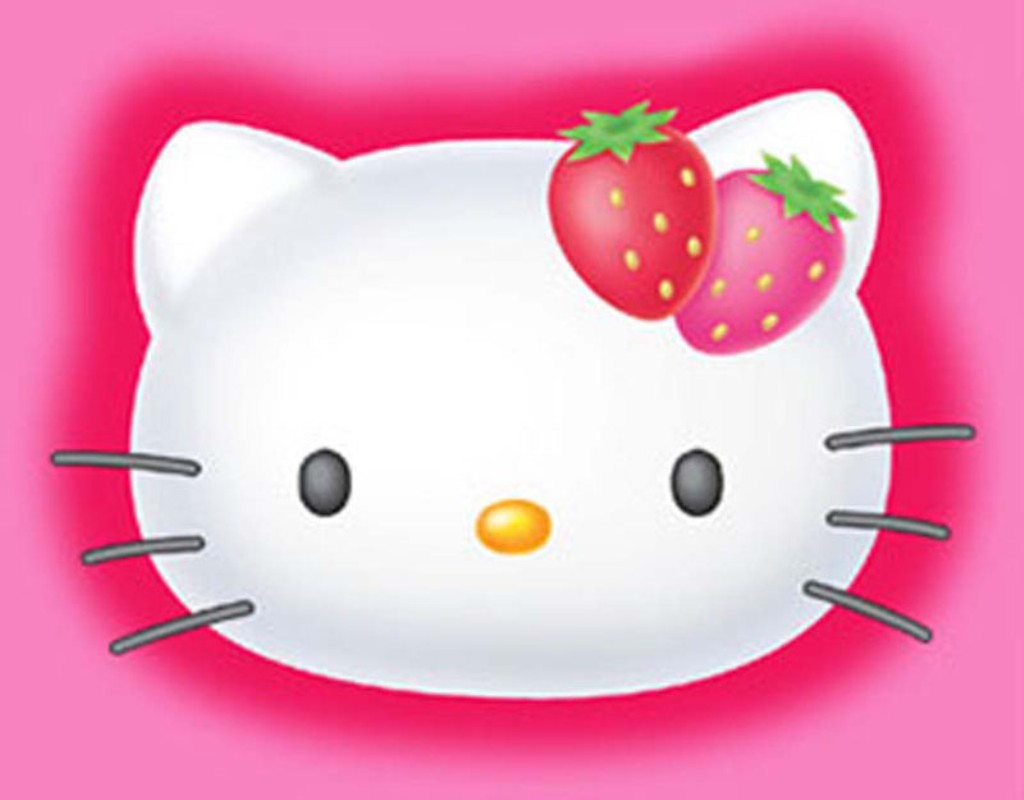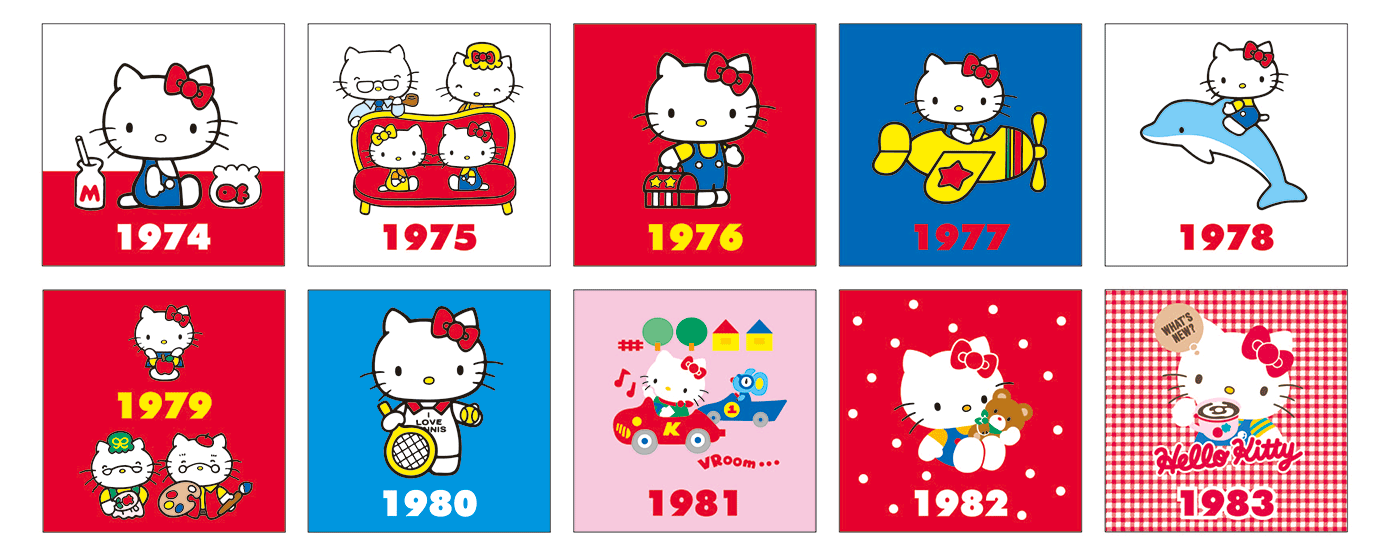Table Of Content

She is portrayed as a sweet and gentle character, and has become a cultural icon and a globally recognized brand. Hello Kitty has appeared on a wide range of merchandise, such as school supplies, clothing, and accessories, and has also been featured in animated television shows and movies. Hello Kitty is one of the most popular and recognizable characters in the world. The cute kitty was created by the Japanese company Sanrio in 1974 and depicted as a white cat with a red bow and no visible mouth. Hello Kitty was originally designed by Yuko Shimizu and was intended to be a simple and cute character that could be marketed to young girls, but, even adults fell in love with Hello Kitty as well.
She's not actually a cat
However, in a Hello Kitty book published by Natsume publications where Hello Kitty introduces Japan to her boyfriend Dear Daniel, she lives in a Japanese style house with her entire family, and they can all speak Japanese fluently. Well, regardless of where Hello Kitty comes from, one thing is clear, she is a cute and lovable character that is still popular today. The Fairilu are portrayed living in the fictional realm of Little Fairilu and learning about themselves and the world around them.
Barbie, Hello Kitty, and other iconic toys: Where did they come from? - MSN
Barbie, Hello Kitty, and other iconic toys: Where did they come from?.
Posted: Sun, 30 Jul 2023 07:00:00 GMT [source]
British or Japanese?
From vintage finds to the latest collaborations, the new high-tech Hello Kitty Hollywood store boasts merchandise, food and photo ops for all ages. So, grab your bestie and say “hello” to the following supercute ways to live your best Hello Kitty life in Southern California. Strawberry is the first original design from the Japanese company Sanrio, starting in 1962. 3 - All copies of a Hello Kitty dictionary for children had to be pulped when it was discovered that they contained a definition for “necklace” which referenced it as a means of execution favoured in South Africa, involving a burning tyre. 1 - Designer Yuko Shimizu got the name Kitty from Lewis Carroll’s Through the Looking-Glass. An anime short based on Alice in Wonderland starring Hello Kitty as Alice was made by Sanrio and released as part of Hello Kitty & Friends.
Kitty's Friends
It may seem that despite all the popularity surrounding Hello Kitty, there are still haters of the brand. This is true; over the years, there has been a fair amount of controversy surrounding Hello Kitty, and there remain haters today who dislike the brand and all surrounding it. In 2015, she made a playable appearance in Nintendo's Wii U game Super Mario Maker of the Super Mario franchise, in the form of a special Mystery Mushroom costume in the "Super Mario Bros" theme exclusively. When the player plays as her (or My Melody, who also appears as a costume) and finishes a level or loses a life, the respective jingles have Hello Kitty effects. In 1996, Big Top Productions released Hello Kitty Big Fun Deluxe for Mac & Windows with three guest characters Joey Mouse, Cathy Rabbit, and Thomas Bear making appearances within the game. 2009 marked the collaboration between apparel and accessory brand Stussy and Hello Kitty.
Character Information

In April 2017, Melo began hosting a radio show called "めろぉのフレンズソング" on the internet radio network TS ONE.[300] The radio show plays soothing music while various Sanrio characters make occasional appearances. Spinoff characters from My Melody include My Sweet Piano, one of her closest companions, Kuromi, her rival, and Little Forest Fellow, a relative. My Melody also appears in the Sanrio Digital and Dream Cortex series, The Adventures of Hello Kitty & Friends. She, however, is mouthless there, and her rival Kuromi doesn't make an appearance. She is said to have been born in London, and it’s believed that the reason for this is that at the time Hello Kitty was created, foreign countries were known to be trending in Japan.
Hello Kitty is a human girl and not a cat
In a 2010 survey, she was in third place behind Anpanman, and Pikachu from Pokémon. Shimizu’s former assistant, Setsuko Yonekubo—the same one who had declared Shimizu’s initial illustration so very kawaii—oversaw Kitty during the boom years. She introduced incremental innovations like the first portrayal of Hello Kitty in a standing pose, but otherwise made a point of hewing closely to her predecessor’s linework, down to using a photocopied template of Kitty’s face to ensure uniformity. Whether because of this conservative approach or because of the ever-changing whims of young children, the first Kitty fad ran out of steam around 1979. Yonekubo took the opportunity to announce her own retirement, for she wanted to start a family of her own. The character's first appearance on an item was a vinyl coin purse in Japan, which ended up being the hottest selling item that year which came as a surprise to everyone.
Gudetama (
Hello Kitty popped up not just on posters, pencils, keychains, and other kid fare, but on adult items such as travel bags, cosmetic brushes, bras, consumer electronics, and duct tape as well, signaling to adults that it was okay to flaunt the cute. If you spent any amount of time in a Sanrio Surprises store growing up – you had a lot of cute little characters from which to choose to adorn your coin purses, pencil boxes, notebooks, memo pads, pencil sharpeners and more. From Pochacco, Keroppi and Badtz-Maru, to the queen Hello Kitty herself, it wasn’t back-to-school season until your backpack was packed with Sanrio stationery and supplies.
While she originally coined the name kitty for the character, Tsuji decided to name the cat “Hello Kitty” to promote social communication. However, only two years after Hello Kitty was created, Sinrio began exporting the branded products overseas, where it quickly gained even more popularity. A lot of fans find it weird to see Hello Kitty with a mouth, The Toys That Made Us notes, but the character has kept on chatting in animation. By far the character's biggest TV success is the children's variety series Hello Kitty's Paradise, which aired on Tuesday mornings in Tokyo from 1999 to 2011 and was partially adapted for US television. Sanrio promised at least 100 new items each month, all priced just right for a kid's purchasing power. It would take a while for Kitty to stand out, even among the Sanrio crowd — the company has created more than 400 characters for its products — but even now, her vast array of items is part of what Hello Kitty fans love.
Hello Kitty was created by a young designer called Yuko Shimizu for the Japanese company Sanrio in 1974. She is a gijinka (an anthropormorphism), and more specifically, she’s kawaii—the quality of ‘cuteness’ so highly prized in Japanese culture. She was originally called ‘Hi Kitty’, but the story goes that her first name didn’t really stick, so she became Hello Kitty (ハローキティ or Harokiti in Japanese). Originally targeted at young girls, she caught the imagination of an older audience. Since then, mums have been buying Hello Kitty products for their own daughters, performing the role of brand advocate in a neat little case study of cross-generational marketing. The original design for Hello Kitty was simple – a white cat with no mouth, wearing a red bow on her left ear.
Your destination for all things “small gift, big smile,” the Sanrio Store in Little Tokyo (115 Japanese Village Plaza Mall, Los Angeles 90012) celebrated its grand re-opening in August 2019. Shop here for all your Sanrio needs from favorites like Hello Kitty, My Melody, Chococat, Keroppi, and newer additions to the HK fam like Gudetama and Aggretsuko. You never know who you’re going to run into at the Sanrio Store, as both Gudetama and Aggretsuko have been known to make special in-person appearances. Make sure you’re following @sanriojapanesevillage so you don’t miss out on special promotions like free Aggretsuko toilet paper to the first 50 guests (yes, that actually happened). While most Hello Kitty products are made for children, as the brand’s customers have gotten older, Sanrio has catered to them with more adult-oriented products.
There have been several different animated series starring Hello Kitty. The first was Hello Kitty's Furry Tale Theater, an animated television series with minute episodes that premiered in 1987.[53] The next, an OVA titled Hello Kitty and Friends, spanned 30 entries originally released in Japan between 1989 and 1994. Hello Kitty's Stump Village came out in 2005, and The Adventures of Hello Kitty & Friends came out in 2008 and has aired 52 episodes. A crossover series under the name Kiss Hello Kitty (that paired animated versions of the members of the rock band KISS with Hello Kitty) was announced in March 2013. Produced by Gene Simmons, this show was supposed to air on The Hub Network (now Discovery Family),[54] but it never came to fruition. The Hello Kitty brand rose to greater prominence internationally during the late 1990s.
Almost since her introduction, children's author and illustrator Dick Bruna has insisted that Hello Kitty and her pals resembled the design of his own cute creation, Miffy. First published in 1955 — nearly 20 years before Hello Kitty’s debut — Miffy is a white rabbit with an oval head, small, black eyes and a tiny “X” for a mouth. Still, Bruna never officially challenged the designs until 2010, when he sued Sanrio for its character, Cathy, a white rabbit that is Hello Kitty's best friend. The timing was a bit strange, considering Cathy was introduced in 1976 and has been featured on thousands of products over the last 35 years, but the courts still ruled in Bruna's favor.
All about the latest Hello Kitty x Casio BABY-G collaboration (and where to buy it) - Lifestyle Asia Bangkok
All about the latest Hello Kitty x Casio BABY-G collaboration (and where to buy it).
Posted: Fri, 02 Feb 2024 08:00:00 GMT [source]
With every new person introduced to the iconic character, the beloved emblem displays a new fan falling in love. Without the iconic logo that displays the legendary character, we can be sure that Hello Kitty would not be as famous as she is today. Despite the statement from Sanrio representatives and Shimizu, critics read into the lack of mouth shown on the character. Soon, Hello Kitty had expanded to Taiwan and South Korea, amongst other Asian countries. In 1983, Hello Kitty made her grand debut in the United States, and her fame skyrocketed. Well, it’s all thanks to the endless array of products featuring her iconic image.

No comments:
Post a Comment